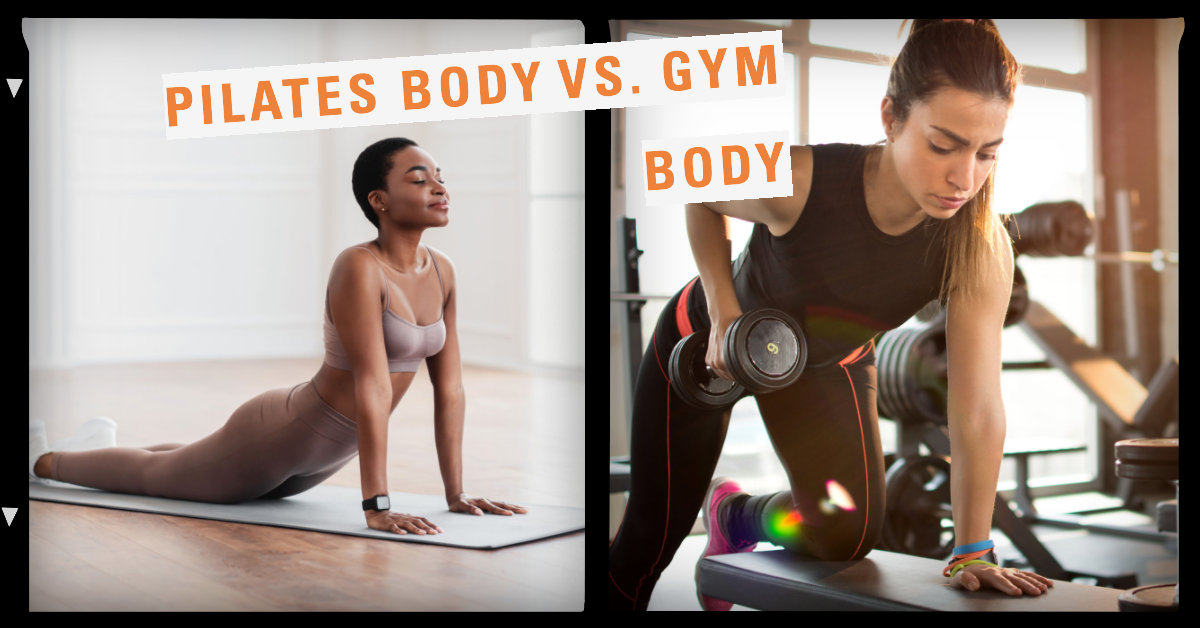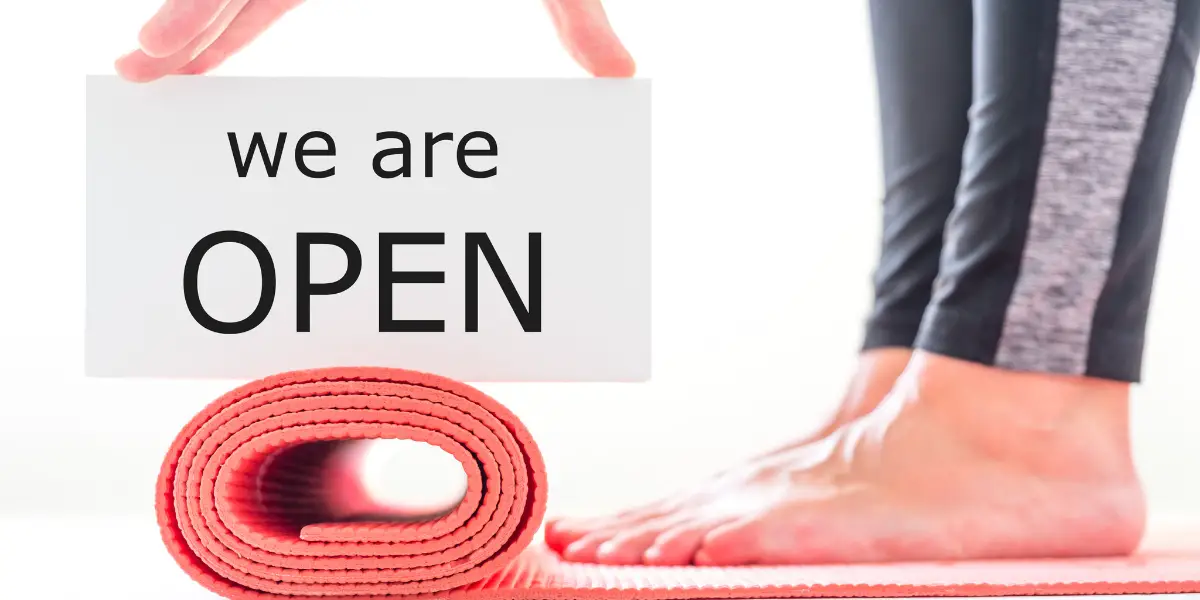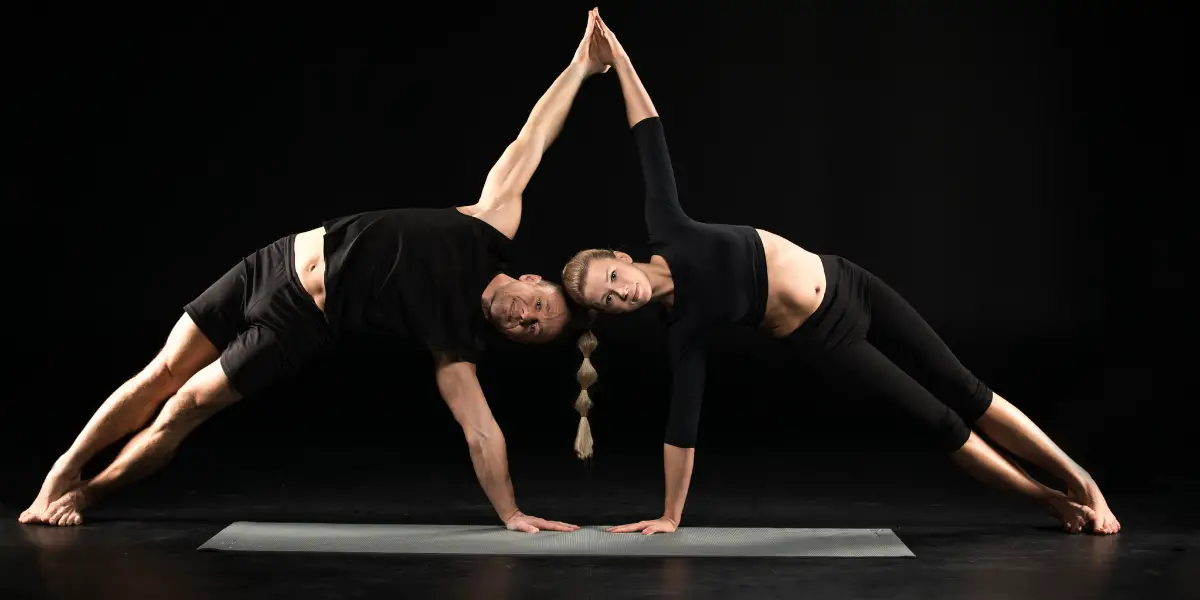If you want to improve and maintain your physical and mental health, exercising regularly is essential. Pilates and gym workouts are popular methods of increasing and maintaining your fitness. Both offer many benefits, but some key differences between them can help you decide which is best for your fitness goals.
A Pilates body is typically toned, lean, and flexible, while a gym body is firm, bulky, and muscular. Pilates emphasizes the correct form and breathing techniques, while gym workouts focus on pushing physical limits. Gym workouts emphasize building muscle mass and improving cardiovascular endurance.
Ultimately, both types of exercise can be effective for achieving your fitness goals; it just depends on what you are looking to accomplish and when you want results. This article will explore the differences between a Pilates body and a gym body, so you can better decide what’s right for you and your goals.
The Differences Between Pilates Body and Gym Body
Pilates and gym workouts are both popular forms of exercise, but they offer very different results. Pilates is a body workout involving conditioning and improving your core strength, while gym workouts focus more on weight training and cardiovascular exercises.
While they both provide beneficial physical activity, the main difference between a Pilates body and a gym body is the type of muscle development each produces, which creates a different body appearance.
The following is a chart explaining the differences in Pilates and gym workouts, including body results:
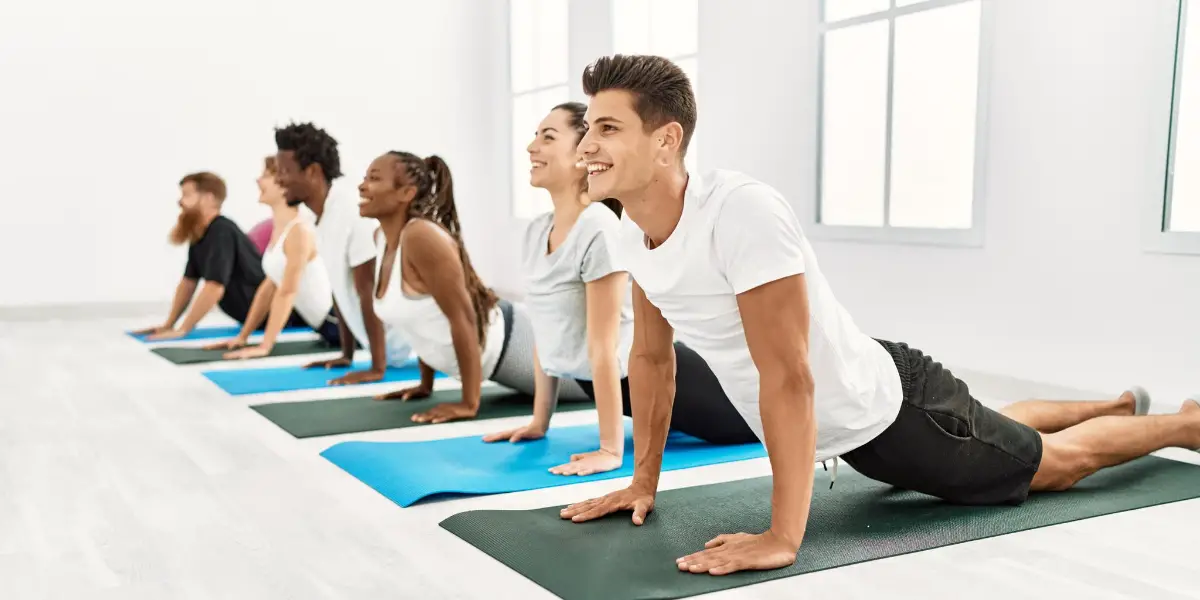
✔ Improve posture, balance, and coordination
✔ Improve mobility and flexibility
✔ Whole body sculpting
✔ Breathing and concentration
✔ Core activation
✔ Low-impact, gentle
✔ Stable and sturdy
✔ Soft and fluid
✔ Natural, lean appearance
✔ Overall improvement in health
✔ Core strengthening and stability
✔ Improving body
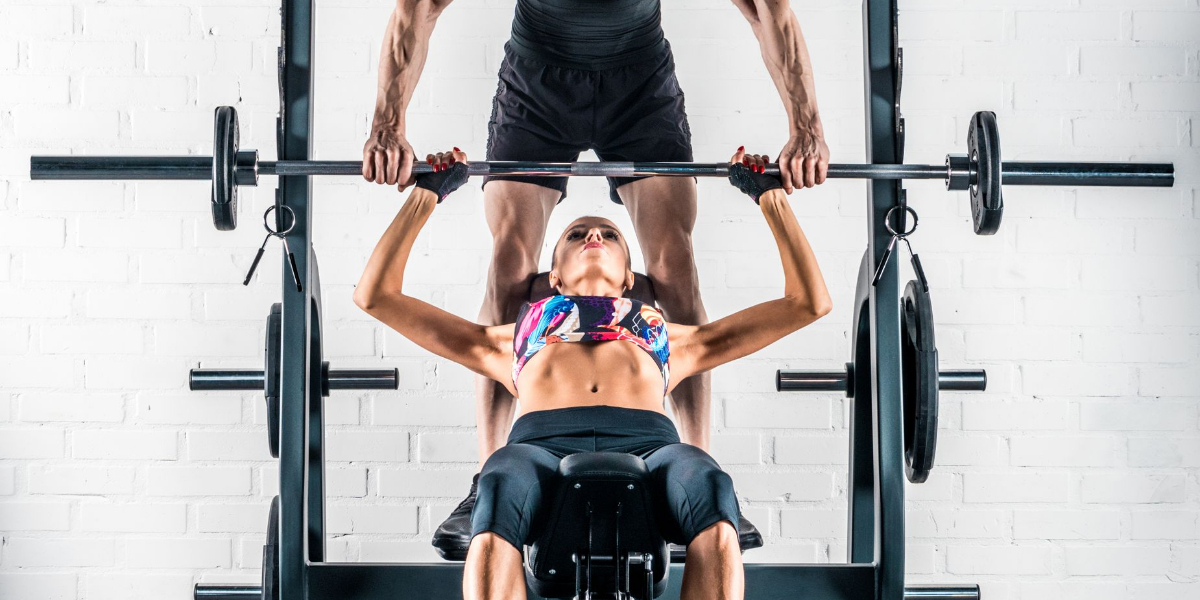
✔ Increase strength
✔ Improve agility
✔ Improve endurance
✔ Isolated sculpting
✔ Single focus strengthening
✔ Cardiovascular
✔ High-impact, intense
✔ More agile
✔ More endurance
✔ Bulky appearance
✔ Quicker weight loss and muscle build
✔ Increase strength and agility
The Pilates Body Characteristics Explained
Pilates is an exercise system that combines strength training, stretching, and breathing techniques in order to improve flexibility, which helps prevent injuries.
In addition to physical differences, mental differences exist between the two types of exercise. Pilates requires concentration and mindful movement, while gym workouts usually require more energy and motivation to complete.
With Pilates, you get the full experience of your body changing physically and mentally with a smooth transition. You learn to align your mind and body with breathing and motion techniques to move seamlessly in and out of positions.
The Pilates Focus Points
Pilates emphasizes the development of lean muscle mass by focusing on the following:
- Increase core stability and strengthening in your abdomen, back, and hips: Core stability is extremely important during workouts and daily activities. Mastering Pilates techniques allows you to strengthen your entire body, helping to prevent injuries.
- Improve posture, balance, and coordination: The Pilates body has a dancer’s posture, which means that it stands straight and tall with the chest lifted and the pelvis tucked in, so the lower back is long. It promotes poise and gracefulness and improves your general co-ordination and balance.
- Improve mobility and flexibility: As you master the various Pilates techniques, your muscles learn what they should be doing naturally. They lengthen, flex, and support joints, which is why flexibility and mobility are important aspects to help prevent injuries.
- Whole body sculpting is achieved from this type of exercise: This is because Pilates focuses on using the body’s own weight to work against gravity to build strength, flexibility, and balance. However, you can incorporate resistance bands, the Pilates Reformer, and other equipment to increase intensity.
Techniques Used in Pilates
Pilates teaches you the art of knowing your body, its limits, and capabilities from the following techniques:
- Breathing, concentration, and control: Pilates teaches you how to control the movement of your body through breathing and concentration during position changes. This technique creates awareness during movement, which helps prevent injuries by knowing your limits and capabilities.
- Core activation: With pilates, you learn how to work the core muscles more effectively through motion, force, and gravity. You will be able to control your whole body better and get the best results during workouts and in daily activities from core activation.
- Low-impact and gentle: Unlike cardiovascular exercise, Pilates is low-impact and focuses on concentration, breathing and control. There’s less impact intensity, even when using the equipment.
Note: Although Pilates is considered to be low impact, it can still damage your joints and muscles if you don’t perform the techniques correctly. That is why stretching exercises are essential before or after strength training to avoid muscle strain or injury. A “Pilates body” is developed once you gain the flexibility that this type of workout offers.
The Pilates Body Naturally Strong Appearance
A Pilates body is a lean, long, and graceful body. It is also a strong and flexible body that can improve your overall abilities to do daily tasks as well as sports. The Pilates body can also move with great ease and fluidity, even when it must be strong in order to perform the movement, such as in sports.
This means that it can lift heavy weights, as well as jump high or run fast or do any other type of movement that requires strength.
What Pilates Can Do for You
Pilates is best for those who want to look naturally fit and have an evenly toned body. It’s also for improving your overall mental and physical health, as well as body abilities. But if you’re looking for a bodybuilder type of build, you may want to look into a gym body.
While Pilates offers numerous physical benefits, it also allows you to increase your body awareness. You have to concentrate on your body as it moves through each position, and you develop an awareness of how each muscle group is working in order to hold the position correctly. Thus, it teaches you to understand your body, how it moves, and its limits.
As a versatile form of exercise, you can tailor-make your Pilates workouts according to your activity level. Whether you’re a beginner or advanced, you’ll begin to see and feel results within the first few weeks. You’ll have more energy and feel tighter, which is motivation to continue.
Since Pilates is a lower-impact form of exercise, it’s easier on the joints. It’s, therefore, no surprise that professional athletes and those with physical injuries or chronic illnesses often use it for rehabilitation purposes.
And as previously mentioned, you can enhance the toning and muscle-build results by including various equipment into your pilates routine. Equipment like dumbbells, balls, and resistance bands will create a more intense workout.
Because of how it improves your overall ability to carry out daily activities and tasks, such as bending, lifting, and walking, it’s considered “functional fitness.”
If you’re interested in learning more about Pilates equipment (or just curious), check out my complete guide, “Home Pilates Equipment Guide: Everything You Need to Know to Get Started.”
The Gym Body Characteristics Explained
When you go to the gym, you are increasing cardio, building muscle, and burning fat. Gym workouts typically focus on increasing strength and size, along with overall health. They also involve resistance training with weights or machines that help to build larger muscles.
Key Focus of a Gym Body
The following are the focus points when obtaining a gym body:
- Increase muscle mass and strength: Machines, dumbbells, and other equipment are utilized to push your muscle strength to its limits to increase in size.
- Improve agility and endurance: Agility exercises help with speed, coordination, and effective movements. Endurance exercises increase breathing and heart rate, such as cardiovascular fitness.
- Isolated areas of sculpting: What this means is you’re only working on the areas you’re focusing on during your session. For example, using machines to beef up the muscle mass in your arms will not build muscle mass in your legs. To get a whole-body workout, you need to focus on individual areas at a time.
Techniques Used To Achieve the Gym Body
The following techniques are used to push your body into overdrive to obtain optimal results:
- Single focus strengthening: Again, this is focusing on individual areas at a time to enhance strength, muscle mass, and build of that area. Several types of workouts are used to work the muscles in different areas of your body.
- Cardiovascular exercises are incorporated: From squats to jumping jacks to running, cardio is used along with strength training to maximize the results. This helps jumpstart your metabolism to burn more calories as you’re working out.
- High-impact and intense, with fast and explosive motions: There is a lot of heavy weight lifting and burst movements, such as cardio routines, with gym workouts. Gym workouts tend to be harder on your bones and joints and can create swelling issues, especially in the legs and around affected joints.
The Gym Body Look
Gym bodies are generally lean, bulky, and defined, but only in areas of focus.
To get a whole-body workout, you must utilize several machines and equipment to have an even build. For example, you’ll need to work the upper part of your body and the lower part of your body by utilizing different machines to keep the muscle build even.
Otherwise, you may find yourself looking quite unproportioned.
The Benefit of a Gym Body
A gym body is a person who spends time in the gym lifting weights and building muscle mass. They usually have a lean, chiseled appearance and are often trying to increase their muscle size with more heavy weight lifting.
Obtaining a gym body entails motivation and energy. You’ll need to incorporate cardio, various weight training for building muscle and fluctuating the intensity to get the results you’re looking for from the goals you have set.
Depending on the intensity of your workouts and the weights you’re using, you can achieve your goals a bit faster with a gym body. So, committing yourself to various gym workouts can quickly boost your muscle mass and endurance and help you lose weight.
Pilates Body vs. Gym Body: Which Is Better?
Both types of training are excellent forms of exercise and can improve your health. So, it comes down to your lifestyle and preference when choosing which workout is better for you.
If you are looking to build muscle and keep a natural appearance, then a Pilates body might be best for you. Those who practice Pilates tend to have leaner physiques. And while a Pilates body won’t make you look like the Incredible Hulk, it will help you develop long, lean muscles that are strong and flexible.
If you want to lose weight rapidly and gain more muscle mass, a gym workout might be a more suitable option for you.
Those who work out in gyms tend to have more bulky physiques. Gym workouts do tend to burn more calories because you’re combining cardio and weight training, which can result in faster weight loss.
However, you can achieve weight loss through Pilates also, but it can take a little longer if you aren’t utilizing other equipment as mentioned above.
Typically you’ll begin seeing results from either type of training within the first three to four weeks, depending on how often you’re working out.
Can You Do Pilates and Gym Training?
You can incorporate both exercises to maximize your training experience. Many people enjoy incorporating cardio and strength training with Pilates to get the heart pumping and increase muscle build quicker.
The following are benefits to doing both:
- A solid physical foundation.
- More stability and balance from strengthening your core.
- Body strengthening to prevent injury.
- Strong and lean figure that’s better balanced.
Conclusion
Align your workout with what fits your goals and lifestyle. If you’re looking for a body that appears naturally lean and is flexible, Pilates may be a better choice for you. If you’re looking to increase your cardiovascular fitness and lose weight or bulk up quickly, then a gym body could be what you’re looking for.
While both are beneficial, each has its own unique benefits, as mentioned in this article.
Sources
- CDC: Benefits of Physical Activity
- Women’s Health Magazine: Functional Fitness Is The Workout You Never Knew Your Body Needed
- Vertimax: 8 Best Agility Training Exercises
- Very Well Fit: Everything You Need to Know About Cardio Exercise
- Big Blue Strength: 5 Benefits of Pairing Pilates & Strength Training

